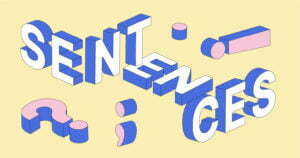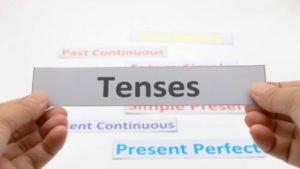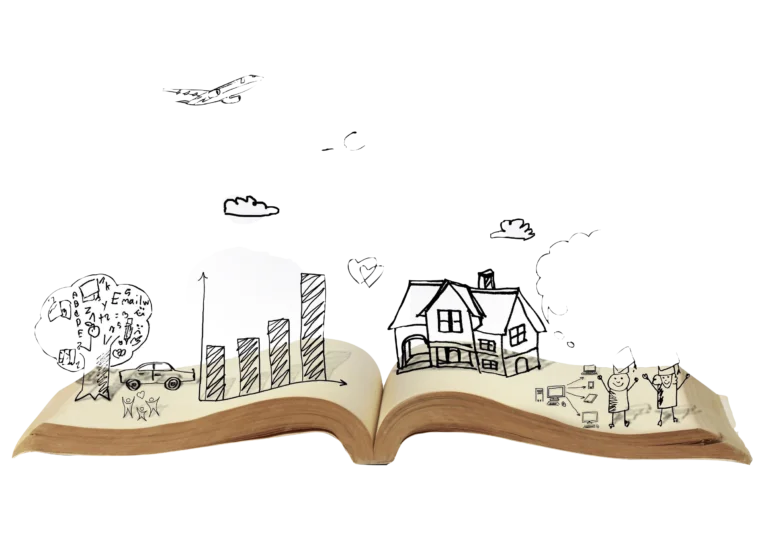In a story, the plot refers to the sequence of events that occur in relation to one another. It is a crucial component of creative writing. In this article, we will look at the importance, structure as well as different types of plots in creative writing.
What is a Plot in Creative Writing?

The plot in creative writing is a description of a story’s structure. It portrays how a tale develops, unfolds, and eventually progresses. Furthermore, a cause-and-effect relationship is explained in a plot. It not only narrates the main theme but also explains how the events of the novel unfold. Most literary works, whether fiction or nonfiction, revolve around a plot.
There are three main elements in any plot.
- The characters clash with other characters.
- Characters clash with their surroundings.
- The struggle between one’s own character as well as one’s own self.
What is the Significance of a Plot in Creative Writing?
It’s difficult to imagine where a novel would go without a plot or how tension and conflict would occur if it didn’t exist. A plot refers to the events that take place in your write up and is responsible for all the emotional responses of the characters. Furthermore, it is essential for readers to comprehend not only what’s going on, but also why it’s going on, so they can identify how these events connect.
The Structure of a Plot
Freytag’s Pyramid is the structure that is utilised to build a plot in creative writing. It consists of two parts, namely, play and counterplay. The introduction, incitement, rising movement, climax, decreasing action, resolve, as well as denouement are the five main elements in Freytag’s pyramid. Let’s look at each element in detail!

Exposition
Exposition is the first component of Freytag’s Pyramid. The author uses exposition to explain the story’s background. This step also explains the setting of events, the historical context, and the primary concepts. This stage serves as a prerequisite for the occurrence of subsequent episodes in a story.
For example, tension expressed in the exposition could represent the beginning of a relationship between two main characters as in Pride and Prejudice.
Rising action
The rising action is the second component of Freytag’s Pyramid. There is an increase in activity in the narrative at this point in the story, which leads to a slew of issues. Furthermore, this element prepares the scene for the story’s conclusion. It is crucial for connecting the events in literature and ultimately leading to the story’s turning point.
In Harry Potter and the Sorcerer’s Stone, for example, the increasing action occurs when we discover who Voldemort is. Following this event, many bad things start happening, which the characters realize are all connected to Voldemort
Climax
The word “climax” comes from a Greek word that means “ladder.” The tale reaches its peak of tensity and conflict in this section and the increasing action establishes the conditions for the climax. One cannot tell a story without the existence of a ‘turning moment’. It offers story depth as well as originality. Furthermore, tensions are at their maximum here, producing a sense of excitement, horror, and urgency in the reader.
For example, the climax of classic hero stories is when the hero finally confronts the giant monster, leaving the reader to wonder who will win and what this outcome means for the rest of the story.
Falling Action
The falling action is the polar opposite of the rising action. In the same way that rising action leads to the climax of a story, falling action brings the story’s events to a close. In a story, this occurs after the climax has occurred. This stage resolves the obstacles and tensions that arose in the previous stage, and the story comes closer to its conclusion. The author also ties up any loose ends in the main plot and any subplots at this stage.
For example, the trial and Atticus Finch’s involvement in it are depicted in To Kill a Mockingbird. Tom is imprisoned and shot, and Scout and Jem are harassed by accuser Bob Ewell, who blames their father for making a fool of him during the trial.
Resolution or Denouement
The phrase ‘denouement’ is a French noun that literally means ‘result.’ This is the pyramid’s final step, where the story exposes its outcomes. In other words, this phrase reveals the end fate of the story’s characters. The end also hits the characters’ futures. There is a sense of completion and closure here, as though there is nothing else the reader can learn or acquire from the story.
The resolution can be brief, often just a paragraph or two, and it may even take the shape of an epilogue, which occurs after the main action and storyline of the story have concluded. Be careful not to conflate “resolution” with “happy ending”, as resolutions can be tragic and entirely unexpected, too!
For example, in Romeo and Juliet, the resolution is the point at which the family feud between the Capulets and Montagues is at last put to an end following the deaths of the titular lovers.
What Is a Plot Diagram and How Does It Work?
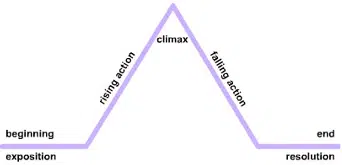
A plot diagram is a tool that many people use to visualize the plot definition and structure. The following is an example of a basic plot diagram:
The fluctuating tensions in the plot are represented by the triangle part of the diagram. A flat, horizontal line, indicating a lack of tension represents the exposition. However, this elevation shifts with the rising activity, or shortly after the conflict is introduced. The rising action is a rising line that continues until it reaches the climax when everything changes. The falling action is a lowering line that denotes a decrease in tension as well as the conclusion of the story and any subplots. After that, the line flattens out into a resolution, giving the characters in the story a new sense of normalcy.
When creating a story, you can return to the plot diagram to make sure you’ve covered all of the important plot points.
Some Examples of Freytag’s Pyramid in a Plot
While most narratives follow a similar pattern, story details can vary greatly. Here are two plot examples from literature to show you how to apply the basic narrative structure (Freytag’s Pyramid) while making your story unique.
William Shakespeare’s Hamlet
Exposition: The ghost of Hamlet’s father, the former king, arrives one night and orders his son to kill Claudius, Hamlet’s uncle and the present monarch, in order to avenge his death.
Rising Action: Hamlet ponders whether or not he should seek vengeance for his father’s death. To perplex Claudius, he pretends to be insane.
Climax: Hamlet, believing Polonius to be his uncle, stabs and kills him. This is a pivotal moment in Hamlet’s life, as he commits himself to both violence and vengeance. Hamlet’s duel with Laertes can also be considered a climax.
Falling Action: Hamlet is sentenced to death in England, but he escapes and returns to Denmark. Ophelia loses her mind and dies as a result.
Resolution: As he lay dying, Hamlet tells Horatio to appoint Fortinbras as King of Denmark and to convey his message to him. Fortinbras arrives and speaks optimistically about Denmark’s future.
Stephen King’s Carrie
Exposition: Carrie, a teen who lives with her dominating, fervently religious mother, is an outcast. Her period begins in the showers at school after P.E. one day. Carrie becomes frantic since she has no idea what menstruation is, which causes other classmates to mock her and bombard her with sanitary items. She realises she has telekinetic abilities around this time.
Rising Action: Carrie is honing her telekinesis, which is becoming more powerful. Their teacher punishes the kids who previously humiliated Carrie in the locker room. Sue, a contrite girl, asks her boyfriend, Tommy, to drive Carrie to the prom. However, another girl, Chris, seeks vengeance on Carrie and intends to rig the prom queen contest in her favour.
Carrie and Tommy go to the prom, and things seem to be going well, at least at first.
Climax: Carrie comes onstage in front of the entire school after being named prom queen only to be showered with a bucket of pig’s blood, a plot carried out by Chris and her boyfriend, Billy. Everyone laughs at Carrie, who goes insane and starts setting fires and killing everyone she sees with her telekinesis.
Falling Action: Carrie returns home to see her mother attacking her. She murders her mother and then returns outside to murder Chris and Billy. Sue approaches Carrie as she is dying, and Carrie learns that Sue never meant to hurt her. She passes away.
Resolution: The towns surviving must come to grips with Carrie’s devastation. Sue is committed to a psychiatric facility. Although it is stated that no one else is like Carrie, we are shown a letter from a mother explaining her young daughter’s telekinetic talents.
Read the document below for another example of Freytag’s pyramid.
503748247-Freytag-Pyramid-Example-pages Download
10 Different Plot Types in Creative Writing
In literature and creative writing, there are 10 types of plots They are as follows:
Overcoming the Monster

In such stories, a hero has to destroy a monster (or villain) that poses a threat to the town or city. Usually, the decisive battle takes place in the monster’s lair, where the hero arms himself with a magical weapon. The monster may be protecting a treasure or holding a Princess hostage, which the hero eventually frees.
The Magnificent Seven, films starring James Bond and The Day of the Triffids are just a few examples.
Tragedy

Here, the story depicts a general downward spiral and suffering through many circumstances.
Othello, Macbeth, and Dr. Faustus are a few examples.
Comedy
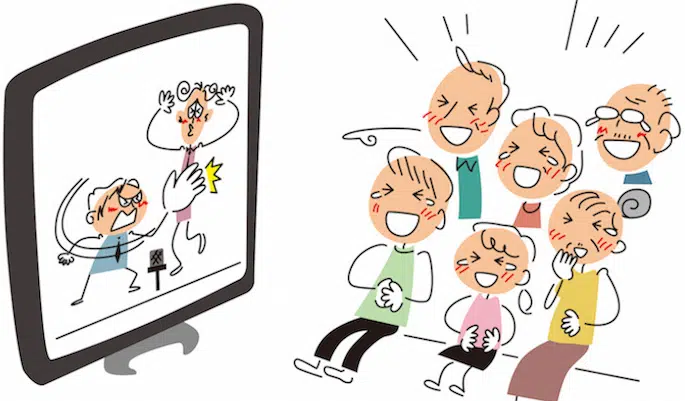
Comedy has been described in a variety of ways throughout history. In general, a conclusion of a comedy story is a happy ending. A conclusion occurs when the aim is met and the main character’s inner conflict is satisfactorily addressed.
For example, a drama about finding true love (Romantic Comedy) have traditionally concluded in marriage.
Comedy plots have three stages:
- The novel is set in a town where people’s relationships are clouded by doubt, ambiguity, or frustration.
- The perplexity grows until it reaches a breaking point.
- The truth emerges, views shift, and relationships re-establish through love and understanding.
Rebirth

Rebirth refers to the transformation of a character from bad to good.
For example, in A Christmas Carol Scrooge finally chooses to reform and therefore saves himself. Other examples include Beauty and the Beast, Secret Gard and Sleeping Beauty.
Rags to Riches

This is a story in which the protagonist is poor and he is going through a difficult time in his life, but he eventually achieves success and has a happy ending.
Cinderella, King Arthur, and Aladdin are a few examples of rags to riches plots.
Rags to riches stories have two other different endings. They are as follows.
- Failure: When the hero fails to win in the end, generally because he desired riches and status for selfish reasons, This version, is also known as the “dark” version of the story.
- Victory: Here, the hero could achieve his aims, but only in a hollow and frustrating way, because he has again sought them only in an external and egocentric form. Although such a plot is a successful conclusion in literary terms, it is actually a failure since the hero fails to fully reconcile his inner conflict.
Good vs. Wicked
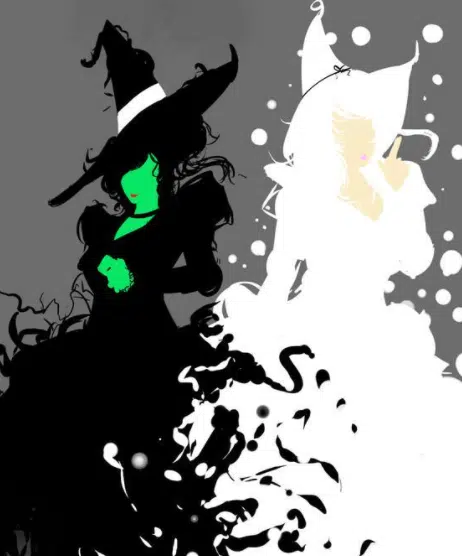
In a story, this refers to the good protagonist who seeks to defeat the evil adversary.
Percy Jackson and all Marvel superhero films are examples of this plot.
Return and Voyage
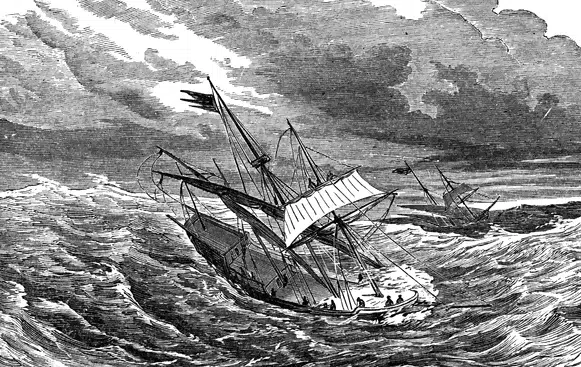
Voyage stories often depict a hero who travels to a distant place that appears weird at first but turns out to be an enchanting area afterwards. The hero eventually feels endangered and trapped in this world, and he must attempt a daring escape back to the safety of his homeworld. The hero learns and grows as a result of his quest in most cases, but sometimes he does not, and as a result, he abandons his real love or other chance for happiness in the other world.
Some examples are Caroline, The Wizard of Oz, Robinson Crusoe, Gulliver’s Travels, as well as Lord of the Flies.
Mystery

Mystery refers to a story in which an outsider witnesses a gruesome occurrence and attempts to uncover the truth.
For Example, Nancy Drew, Murder on the Orient Express and Death on the Nile.
Quest
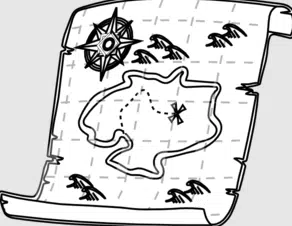
Such stories include a hero who sets out on a trip to seek a valuable treasure that is far away.
For example, Odyssey, Lord of the Rings, Indiana Jones have a quest type plot.
Stories in which the desire for an object does not offer bliss are another variant of this basic storyline. Take, for instance, Moby Dick and Raiders of the Lost Ark.
The Progression of the Story in Each of The Different Types of Plots
| PLOT TYPE | ACT 1 | DRIVER | ACT 2 | ACT 3 | ACT 4 | FINAL DRIVER |
| Overcoming The Monster | People anticipate the action and become aware of the monster | The call of the hero: The hero must confront the beast. | Everything appears to be OK as the hero prepares to fight. | The hero is outmatched by the monster. | In the final battle, it appears that the hero will lose. | The hero kills the monster and flees with the princess and/or treasure. |
| Rags To Riches | The hero is poor, wretched and unhappy | The unexpected event transports the hero to a realm other than his own. | Hero’s early achievement, advancement in position, and meeting his love | Everything goes wrong in the central crisis and the hero is betrayed by his love. | The hero discovers his actual inner strength and triumphs over the adversary. | Hero reclaims his love and achieves more rank and happiness. |
| The Quest | The story begins in a horrible dystopian city where life is bad | Hero has a vision: the path to a better life can be found a long-distance away. | As the hero travels toward his goal, he encounters monsters, and challenges, each of which is worse than the last. | When the hero arrives, he is met with yet another massive hurdle. | Final ordeal – the hero faces his most difficult opponents or challenges yet. | Hero accomplishes his aim, obtains the treasure, the princess, and eternal fame. |
| The Voyage and Return | Hero is bored with life and open to new experiences and adventures | The hero finds himself in a strange and unfamiliar environment. | Hero investigates this new universe, which is intriguing, engaging, and exhilarating. | The new reality gradually becomes frightening and dangerous. | Nightmare has arrived. Hero’s life is in great peril. | Hero makes an exciting escape and returns to his own world, but this time everything is different and better. |
| Tragedy | The Hero is dissatisfied with his existence and wishes for more. | Hero is enticed by something he desperately desires but is barred from having. | Hero pursues his/her goal, and things go quite well for him/her at first. | When the hero chooses the wrong actions to reach his goal, he becomes frustrated. | The nightmare arrives, with dark forces he can’t control, assembling to confront him. | Hero is annihilated, whether psychologically, physically, or spiritually. |
| Rebirth | A dark power attacks the hero, either head-on or subtly | Things are going smoothly, and the threat appears to be gone. | Threat resurfaces, is stronger than ever, and completely dominates the hero. | The dark power has entirely triumphed. | Our hero is miraculously rescued by someone or something. |
Final Thoughts
The plot, without a doubt, is the most crucial aspect of a story. It refers to the chronological order of events in which we learn more about the characters, the setting, and the story’s moral. The plot is, in a sense, the root from which all the other aspects of a story sprout. We hope that this article has provided you with all the necessary information required to devise and set up a plot for your creative writing piece.
FAQs
How to begin writing a plot?
Use the following ideas to begin writing a plot.
- Come up with new concepts
- Begin with a straightforward, engaging notion
- There should be a clear central conflict
- Decide on a structure
- Identify general story arcs
- Create subplots.
- Consider the relationship between cause and effect
- Make a thorough outline
For more information, you can watch the video linked below.
What is some plot writing useful advice?
- Begin with the fundamentals: a protagonist, a place, and a conflict. Any successful plot revolves around these three elements.
- When you’re trying to underline the hero’s athletic ability without stating it, show rather than tell your readers what’s going on by utilising “action” terms like jogging or jumping over a hurdle rather than saying he ran five miles every day. In this approach, we can imagine how quickly Andy was sprinting because additional information regarding his physical movement has been provided. This results in a superior reading experience in which the reader is not only conceptually but also visually engaged.
- Combine descriptions of complicated emotions, physiological sensations, and ideas with action verbs such as make them cry to make your readers feel what the characters in the novel did.
For more tips, you can watch the video below.
What effect does the plot have on the theme?
To put the reader in the desired state, the author uses a sequence of interwoven narratives, characters, and settings. The story’s momentum-driven theme, which is hammered home by each succeeding narrative point, character defect, or setting detail, has a great emotional impact. In this way, it’s become evident what the story’s moral, as well as other hints for interpretation and minor lessons nested within the story is.
Share with your friends

